Decisions for War, 1914–1917
£24.99
- Authors:
- Richard F. Hamilton, Ohio State University
- Holger H. Herwig, University of Calgary
- Date Published: February 2005
- availability: Available
- format: Paperback
- isbn: 9780521545303
£
24.99
Paperback
Other available formats:
Hardback, eBook
Looking for an inspection copy?
This title is not currently available on inspection.
-
Decisions for War focuses on the choices made by small coteries in Austria-Hungary, Germany, Russia, France, Britain and elsewhere to address a common yet perplexing question: why did World War I happen? Several of the usual causes for the war are reviewed and discussed. Rather than accepting arguments of mass demands, nationalism, militarism, and social Darwinism, the book shows how in each country, the decision to enter the war was made by only a handful of individuals - monarchs, ministers, military people, party leaders, ambassadors, and others. In each case, we also see separate and distinct agendas, the considerations differing from one nation to the next. The leadership of Japan, the Ottoman Empire, Italy, the Balkans, and the United States are explored, as well as that of the major European countries involved.
Read more- Provides detailed examination of decision-makers and decision-making by rulers in 12 participant nations
- Critiques various theories and positions on causes of the war
- Provides maps and offers further reading opportunities
Reviews & endorsements
'… a vitally important book on this subject …'. Open History
Customer reviews
17th Oct 2024 by UName-144117
The origins of the Great War have long been debated, with an abundant historiography discussing the causes of the great catastrophe. Among this vast literature at least 17 books have the title Origins of the First World War. The major themes include the alliance system, nationalism, social Darwinism, economic imperialism, militarism and the arms race, press agitation, the accidental war - that the initial combatants unintentionally slid into such a catastrophic war, and the domestic cause theme - that conservative elites, faced with serious internal threats, chose war to save their positions. In this thoroughly interesting and revealing study, the authors take a different tack, and get down to the nuts and bolts of how the respective nations actually became embroiled in the war. Eschewing the traditional themes, Hamilton and Herwig argue that a small coterie of no more than eight or ten men made the decision to go to war, and in some cases such as France, one dominant figure played the key role. In doing so, each group was motivated by separate and distinct sets of concerns. The authors make their case well, and remind us that over the course of history, the Great War was actually World War VII Following a review of the above themes, and setting the scene of the international tensions prior to the war with an overview of the European Wars between 1815 and 1914 that undid the Congress of Vienna’s ‘balance of power’, the authors deal chronologically with each of the principal countries that entered the war between 1914 and 1917. Each gets a separate chapter, except Japan and the Ottoman Empire which share one, as do Bulgaria, Romania and Greece. In each study the constitutional framework pertaining to war powers for the country and a resume of the key players is outlined, while the international concerns confronting them, and in the case of the five powers that decided on war in July- August 1914, their reactions during the July Crisis are detailed. This is the real value of the book. The reader gains a clear insight into the thinking and concerns of those in each small coterie, backed by extensive quotes from diaries and documents, and the process by which they considered the emerging crisis. Dominant players emerge, who drove the discussions and decisions to engage in war. This makes informative reading, addressing the reasoning, or lack of, that resulted in the declarations of war, rather than the more esoteric “isms” often served up as causes. Perhaps the most sobering revelation is that rather than accidentally sliding into the catastrophe, several of Europe’s leaders knowingly embarked on a what would be an all consuming struggle - and one wonders at the logic or mindset that would not only contemplate, but actually decide to initiate such a disaster. One is left with the distinct impression that the overriding factor that drove the first four belligerents to declare war was one of fear - primarily a fear of a loss of prestige within Europe, and that their State was seriously threatened, hence Austria-Hungary’s determination to wage war on Serbia, and Germany’s “now or never” attitude with regard to Russia and France. The tensions of the moment ooze from the pages, with some players bordering on panic in the rush to be first. Other nations were driven by different motives. Although not directly threatened British concerns about Germany’s potential hegemony over Europe, and posing a direct challenge to the Empire, swayed them to reluctantly enter the fray. Others had more selfish reasons - territorial gain, and for some the decision on who to support was determined by which of the warring sides offered the best deal, while Germany’s strategic blunders dragged a reluctant United States into the conflict. In the concluding chapter, the authors summarise their views on the reasons each nation decided on war, and suggest the received themes on the origins of the war mentioned in the opening paragraph of this review are inadequate, or invalid. While they make their case convincingly, this reviewer feels the alliance system strongly influenced Russia’s and France’s decisions, while in the Dual Monarchy and Germany the military leadership played a dominant role. An instructive consideration of the various social and commercial elites concludes this fine book, and puts paid to the view that industrial and financial elites had any influence. Hamilton and Herwig have not only made a valuable contribution to our understanding of how the political elites of Europe recklessly plunged their nations into war, but have also provided an insight into their flawed and, in many cases, arrogant thinking. All is clearly told in an easily readable and digestible style, which delivers some surprises - to this reviewer at least. Decisions for War 1914-1917 provides a particularly useful balance to other views on the origins of the Great War.
Review was not posted due to profanity
×Product details
- Date Published: February 2005
- format: Paperback
- isbn: 9780521545303
- length: 284 pages
- dimensions: 226 x 152 x 20 mm
- weight: 0.39kg
- contains: 5 maps
- availability: Available
Table of Contents
1. The Great War: a review of explanations
2. European wars:
1815–1914
3. Austria-Hungary
4. Germany
5. Russia
6. France
7. Great Britain
8. Japan
the Ottoman Empire
9. Bulgaria, Romania, and Greece
10. Italy
11. The United States
12. On the origins of the catastrophe
Recommended readings.
Sorry, this resource is locked
Please register or sign in to request access. If you are having problems accessing these resources please email [email protected]
Register Sign in» Proceed
You are now leaving the Cambridge University Press website. Your eBook purchase and download will be completed by our partner www.ebooks.com. Please see the permission section of the www.ebooks.com catalogue page for details of the print & copy limits on our eBooks.
Continue ×Are you sure you want to delete your account?
This cannot be undone.
Thank you for your feedback which will help us improve our service.
If you requested a response, we will make sure to get back to you shortly.
×
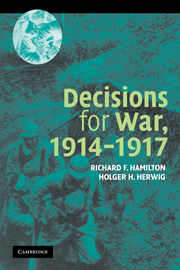
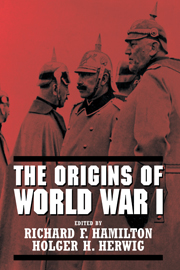

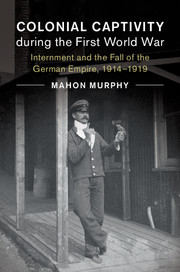
.jpg)
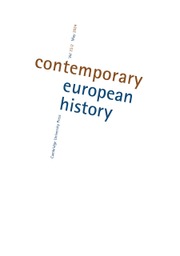
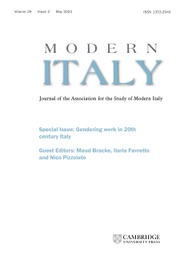
.jpg)
